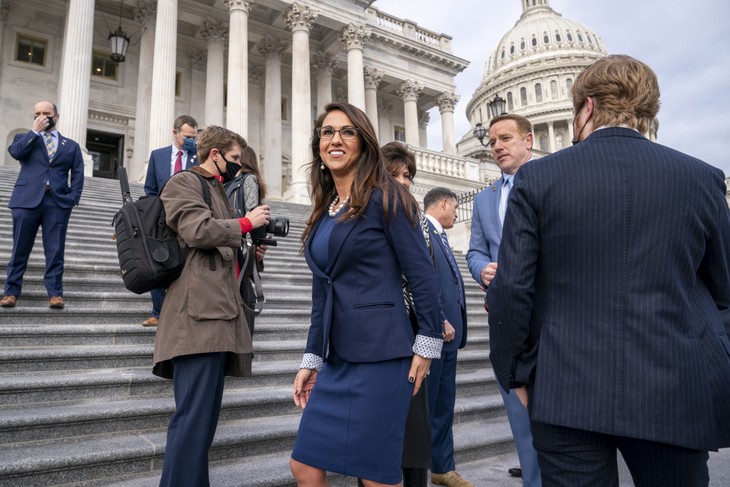During its next term, the U.S. Supreme Court is set to review
a Mississippi law that extended protection to unborn lives starting at
15 weeks — well before the point of “viability” that the court has
considered constitutionally pivotal. It is a direct challenge to the Roe vs. Wade decision,
the cases in its line, and the ensuing precedents that
constitutionalized a system of abortion on demand in the United States.
Ever since the Supreme Court agreed to review the Mississippi law, the commentariat and corporatist media have focused on the potential Democratic and left-wing reaction — that is, on their own reaction. The left is threatening the justices with dire consequences if Roe is overruled. Specifically, Democrats are saying a ruling they don’t like will lead them to pack the Supreme Court.
Clearly,
no longer does the left pretend to argue in a disciplined, legal way
for the legalization of abortion. The language of raw power, bitter
invective, and crude threats have become the vernacular of the
contemporary left in addressing the justices.
‘You Will Pay the Price’
About a year ago, then-Senate Minority Leader Chuck Schumer addressed
a mob from the steps of the Supreme Court even as the court sat
listening to oral arguments in an abortion case. Schumer — who went on
to vote to convict Donald Trump on a charge of inciting a mob to
interfere with the regular process of government — railed:
I want to tell you, Gorsuch, I want to tell you,
Kavanaugh, you have released the whirlwind, and you will pay the price.
You won’t know what hit you if you go forward with these awful
decisions.
Indeed, while discussing Schumer’s diatribe, Mollie Hemingway put it this way:
Democrats’ argument in favor of Trump’s impeachment is
that even though he told his protesters to be peaceful, his refusal to
accept the 2020 election incited a mob. What to do, then, with a Senate
majority leader who issued a violent threat against Supreme Court
justices after a multi-year campaign to undermine confidence in Supreme
Court confirmation processes?
Unsurprisingly, the left’s latest efforts to intimidate the justices
are attracting attention. Yet little media notice is being given to what
the right and Republican voters will do if the court stands pat. That
could happen if, say, a group of “centrist” justices decides to tweak
the current legal framework but let it, in all essentials, stand.
That already happened in the Supreme Court’s 1992 Planned Parenthood v. Casey decision, when Justices Sandra O’Connor, Anthony Kennedy, and David Souter — all Republican appointees — updated Roe’s rigid trimester framework, which the advance of medical science since Roe was decided had made obsolete.
Out of nowhere, Casey created viability as a constitutional
standard. After viability (often around 23 weeks into pregnancy,
although it varies), a state can protect the life of the unborn by
regulating or even forbidding abortion — but only if the protection does
not impose an “undue burden” on the woman’s life or health.
Yet undue burden is an elastic — not to say vacuous — standard, especially since another SCOTUS decision, Doe v. Bolton, found an extremely broad definition of a mother’s health. So Casey is essentially Roe cosmeticized. The ultimate impact of Casey is
that abortion is marginally more regulated, expensive, and sanitary,
but a regime of abortion on demand remains in the United States.
The judicial “moderates” in Casey fatuously thought their pronouncement would calm the national debate over Roe.
So much for the political wisdom of the justices: here we are again,
fighting the same battle more than a quarter of a century later.
A ‘Scorched Earth’ Future?
The
political context of 2021, however, is much more unruly than that of
1992. Because of the changes in our political culture brought about by
Trump’s presidency, the intelligence community’s specious attacks
against it, the riots that were allowed throughout the summer of 2020,
the economic distress caused by the pandemic, and the extreme duplicity
with which election officials conducted themselves in 2020, no one
should assume that rank and file Republican voters will meekly accept
another defeat over Roe.
Conservatives have consistently been told that a key reason to vote
for Republican presidential or Senate candidates — even if these
candidates serve corporate America most of the time — was the Supreme
Court nominees they pick or confirm. These voters, necessary to any GOP
recovery of the White House, are tired of being played for suckers.
If the Supreme Court fails them one more time, do not expect them to
turn out in big numbers for another candidate who promises to appoint
pro-life justices to the court and leaves it at that. Upholding Roe
could even crystallize the formation of a new political party or
movement that is far more radical on judicial matters than the current
GOP. If scorched-earth tactics worked for the Democrats, Republican
voters will scorch some earth on their own.
Many conservative voters’ mistrust of the Supreme Court stems from
its stance on a range of issues, not just abortion. This includes
Obamacare, racial preferences, and Democrat lockdown policies. The court
has repeatedly circumvented the democratic process on common-sense
issues. For example, the court twice intervened in the late 1990s to
stop Congress from trying to keep indecent materials on the internet out
of reach of children.
On
the Mississippi case, don’t miss the broader point: the case is about
the power of the citizenry to decide for itself. The majority of
Americans support
limiting abortions to the first 15 weeks of gestation, as is common in
Europe. Most abortions occur before 12 weeks. Yet the people of
Mississippi or any other state are precluded by a group of unelected
lawyers from using the democratic process to restrict abortion even at
15 weeks? Such an antidemocratic setup makes America’s entire political
system brittle, and ripe for a crackup far more momentous than Trump’s
election.
Why expect the voters who make up the right to want to preserve an
institution that has taken democratic power from states and Congress and
mangled the Constitution — in the interests of the progressive elite —
for almost 50 years? Republican political types need to hear it said
directly: If conservative voters have reason to think GOP campaign
promises about the Supreme Court were all a grift, they will begin to
nominate politicians who make Trump look like Mahatma Gandhi.
Protecting Life
Above all, the Supreme Court must not decide this Roe challenge in the way it decided Casey:
on the navel-gazing basis of “protecting the institution.” The
institution began destroying itself with Justice Harry Blackmun’s Roe decision.
Democrats’ court-packing threats are only taking this to its logical
conclusion, and it is only a matter of time before Republicans do the
same. You cannot split the difference over this issue, which is exactly
why it should have been left to the democratic process in the states in
the first place.
Roe has got to go, based on legal and scientific analysis
alone. If it does not, then the right will start its own planning for
packing the court or otherwise fighting hard against it. A movement to
alter the place of the court in our constitutional system may even
emerge.
If the Supreme Court truly were to follow the rule of law, it would
do something similar to what the European Court of Human Rights did in Vo vs. France
(2004). First, it would hold that the states have the power to protect
innocent, unborn life from deadly private violence. Second, it would
recognize that there can be a variety of reasonable opinions about when
human life begins.
To say that life begins at birth is the Supreme Court’s current
framework and, today at least, a reasonable opinion. Yet it is
reasonable to say that it begins at viability, or when pain can be felt,
or at conception. These positions have medical and moral support. The
Supreme Court in Roe itself recognized this, then brushed aside its own insight.
So long as a state takes a reasonable view of when human life begins —
and that could include conception — the state should have full power to
protect that life from violence. The only exception that should be
permitted is when the mother’s life is seriously threatened, or she
faces a substantial, irreparable, and permanent impairment to a major
bodily function unless an abortion is performed.
The result of such a sensible ruling would reflect the underlying
diversity of opinions in this country. Texas might find that life began
at conception. New York might find that it did not begin until birth.
Florida might take the view that the capability for suffering fetal pain
was the decisive point.
For decades, the court has arrogantly and undemocratically sought to
straitjacket this deep diversity of opinion in the nation. It is time to
restore the decisional power to the people of the states, where it
belongs. Now is not the time for the Supreme Court to engage in
political maneuvering. What the public expects from the court is law,
not self-regarding institutionalism.
What should officials do if the Supreme Court blinks? State
legislatures must draft and enact laws that will command popular
support, regardless of the fate of the Mississippi law in the court. On
select issues with popular moral and voter appeal, such as a Down
syndrome abortion ban, brave governors in the mold of Abraham Lincoln
should be ready to defy the courts.
If Democrats start impeachment proceedings against some justices,
Republicans should not rise to defend them. If six Republican appointees
to the Supreme Court — including the three Trump appointees — are
unwilling to haul the court out of the hole that it began digging for
itself a half-century ago, then the court deserves to be discredited
even further, and it will be.
https://thefederalist.com/2021/06/08/if-the-supreme-court-upholds-roe-v-wade-expect-an-uprising/













